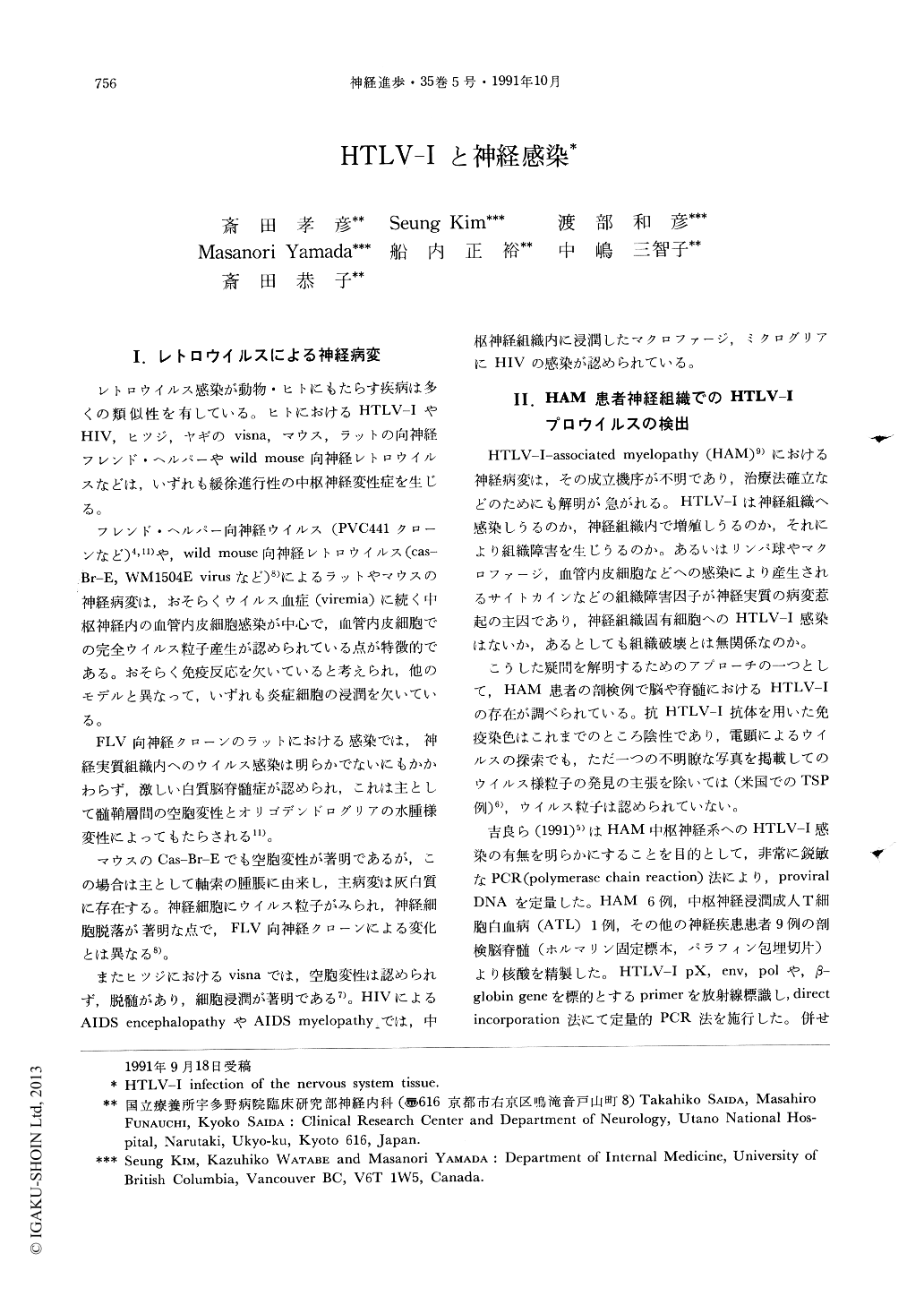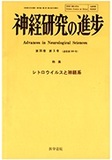Japanese
English
- 有料閲覧
- Abstract 文献概要
- 1ページ目 Look Inside
I.レトロウイルスによる神経病変
レトロウィルス感染が動物・ヒトにもたらす疾病は多くの類似性を有している。ヒトにおけるHTLV-IやHIV,ヒッジ,ヤギのvisna,マウス,ラットの向神経フレンド・ヘルパーやwild mouse向神経レトロウイルスなどは,いずれも緩徐進行性の中枢神経変性症を生じる。
フレンド・ヘルパー向神経ウイルス(PVC441クローンなど)4,11)や,wild mouse向神経レトロウイルス(cas-Br-E,WM1504E virusなど)8)によるラットやマウスの神経病変は,おそらくウイルス血症(viremia)に続く中枢神経内の血管内皮細胞感染が中心で,血管内皮細胞での完全ウイルス粒子産生が認められている点が特徴的である。おそらく免疫反応を欠いていると考えられ,他のモデルと異なって,いずれも炎症細胞の浸潤を欠いている。
Human T-lymphotropic virus type I (HTLV-I) has been considered as an agent responsible for HTLV-I-associated myelopathy/(HAM) tropical spastic paraparesis (TSP). However, the pathogenesis of the diseases remains unclear. In our series of studies, we demonstrated that HTLV-I could infect adult human astrocytes and oligodendrocytes in vitro, although the rates of infected cells were low, at rate of 0.1% and 0.01~0.05% respectively.
Since mother-to-child transmission has been proposed as one of the major pathways for the prevalence of HTLV-I endemic, we investigated the susceptibility of human fetal astrocytes to HTLV-I in culture.

Copyright © 1991, Igaku-Shoin Ltd. All rights reserved.


